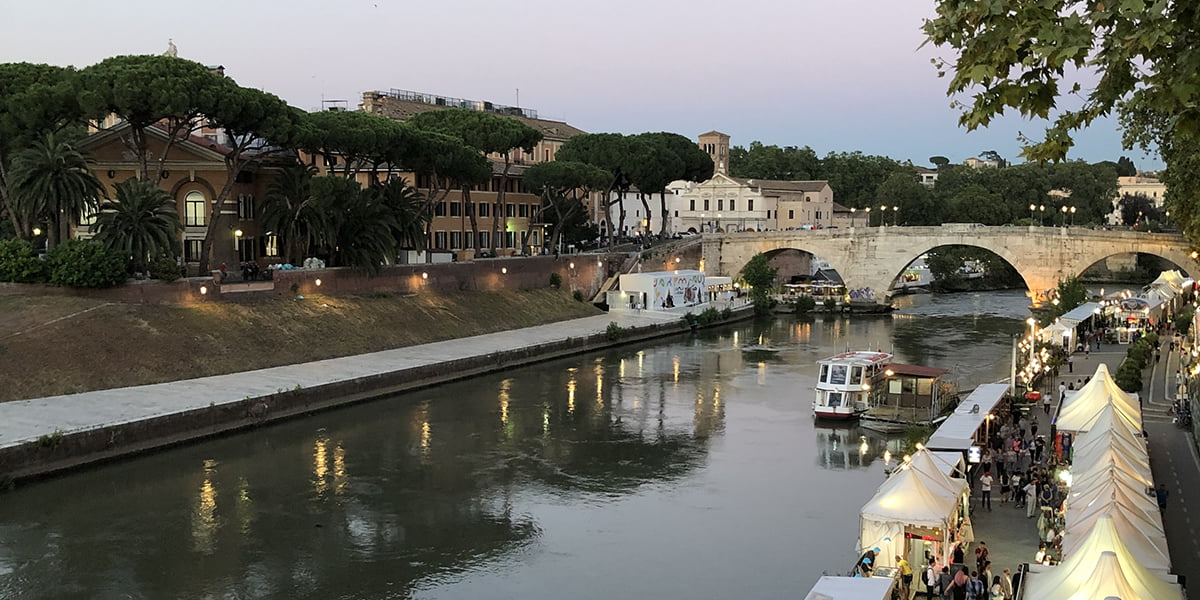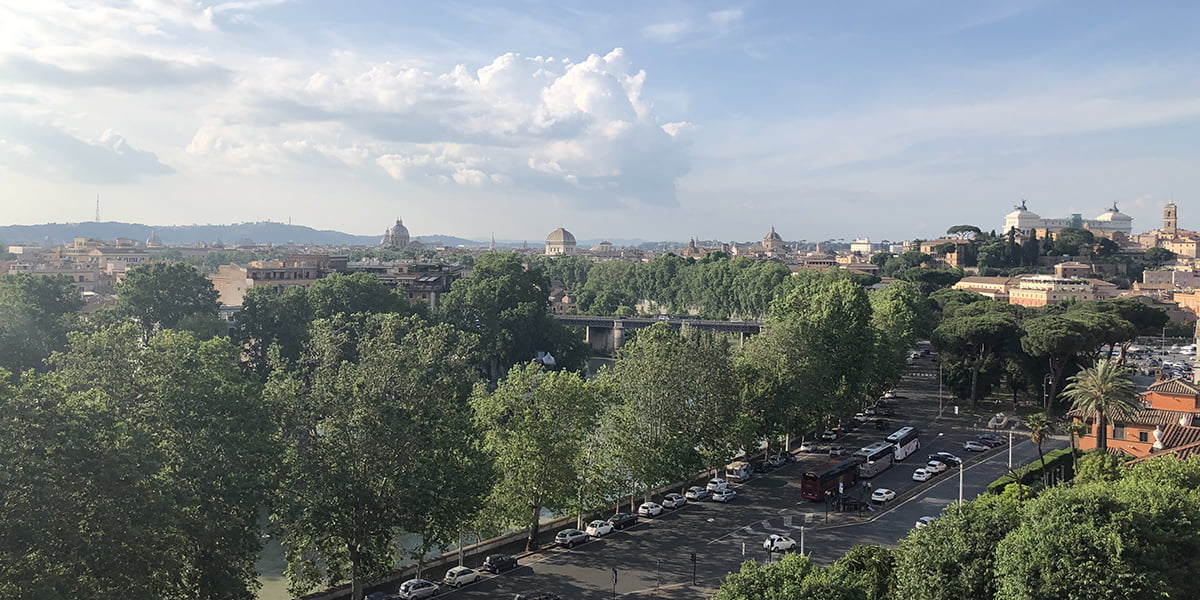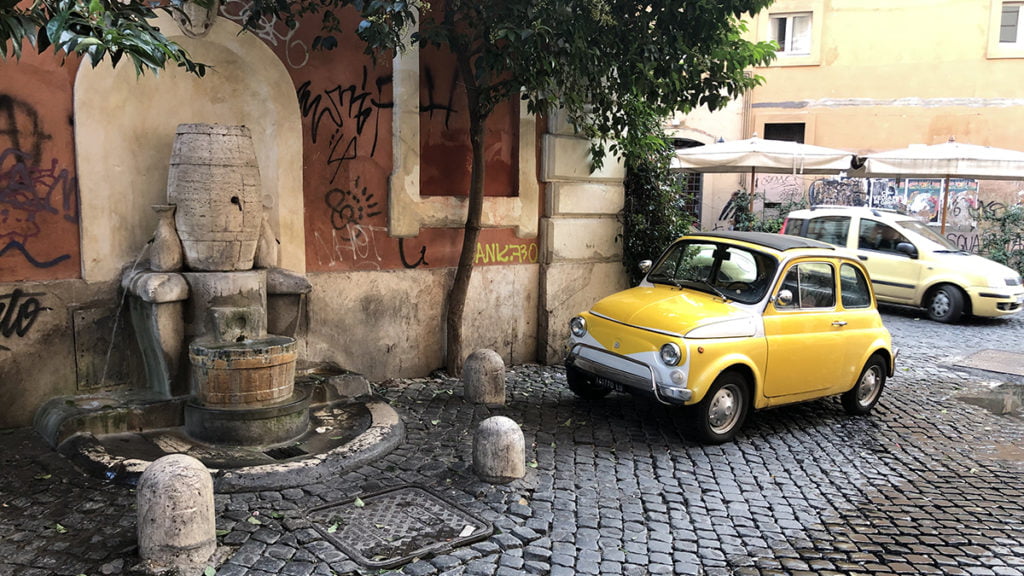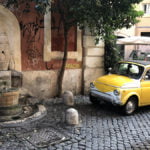5 unusual things to do in Rome for families with kids to escape the crowds
A typical first-time to Rome might be only 2 or 3 days long, and in such a short time, you might not even be able to have a look at all the grand, statuesque touristic attractions, let alone the ones that aren’t marked with big red dots and funny caricatures on the maps of countless leaflets that you find on open tour buses, in train stations, or in the tourist information centres scattered across the city.
In all honesty, 3 days of non-stop sightseeing gets quite tiring, especially if you have kids and you are planning everything yourself!
It could be said that, right after an intensive full immersion into the wonders of the Eternal City, you might not even feel the burning desire to look for things that aren’t easily pinpointed and connected on blogs, websites or travel guidebook.
But, trust us, it is exactly those beautiful pearls that are off the beaten track that make Rome so special.
Unwind in a wonderful pasta-making class

The best part about a cooking class is that you will get to calmly sit a glass of wine while your little ones will be kept entertained with the kneading of pasta dough in a beautiful cooking school in the historical centre of Rome!
The real Romans probably make their home made pasta in their own kitchen, alongside their stone aged yet strangely perky Nonnas (Italiano for grandma) and with the little kids running through the kitchen.
However, trust us, you will be much better off, with an expert chef leading the way and, once your kids get their delicious creation in their teeth, making every tear go away! Book one of our classes here.
Movie time on a beautiful not-so-tropical island

Fun fact: The Tiber Island is the only island in the part of the Tiber River, which runs through the Eternal City!
Many years before a certain Christ was born, this very island was the seat of the ancient temple of Asclepius, the Greek (and later also Roman) God of Medicine and Healing.
Interestingly, over the centuries, it became a centre for medicine and healing, and even today, the FatebeneFratelli Hospital is still located on the island and active every day…but you really don’t want to get a free trip to the hospitals, so stay safe!
So, to recap, the Isola Tiberina is a beautiful island, and, as much as a tropical island doesn’t sound too bad, you have come to the International Capital of Culture and Ancient History, so save the fine sand-blue water dreams for another time!
From mid-June to September, you will get a chance to watch a movie in a charming setting: an outdoor cinema called “L’Isola del Cinema” that pops up on the Isola Tiberina.
If the little ones’ times start roaring, you can browse through the food stalls of the nearby riverside summer market, either before or after the show. Picture it as a fried artichokes to Pixar exhibitions scenario! Not so bad…Also, keep in mind that not all movies are in English, so be careful to check the language before you book your tickets, or your grand family night might end in disaster!
Have a think about what might be below your feet

Once you’ve explored all that there is to see above ground, you might want to lower your gaze and wonder all of the fantastic relics that are still underground. Many of them still remain covered by centuries of stratified dirt and construction. Some of it has come to light, mostly because the citizens of Rome really needed some semi-decent transport (I hope you have inferred the irony, as the public transport system of this beautiful city is known to not be the most effective), and so the metro lines were dug, and with it, thousands of spectacular monuments and statues.
The problem with excavating more is that there are entire homes, offices and parks where one could dig underground to find more ancient treasures, and at the moment, it might not make so much sense to make that much of a mess. So, in order to freely see what is underground, you might want to check out the Catacombs, just outside the city, along the Appian Way.
Keep in mind that the Catacombs are a well known site, but as it is a bit more difficult to reach compared to other places, it gets way less visitors. The Catacombs are subterranean passageways dating from the second to the fifth century that were used as place of burial, principally by Christians and Jews.
Please note: this is not for the faint-hearted (or for the claustrophobic) among you, as it does require you to stroll through tight passages underground, with skulls and bones hopping up here and there!
Momentary birds eye view

Now that we have had a think about the treasures that you can find below ground, let’s think about bringing our gaze upwards, maybe even climb (or, preferably, Uber) up a few hills so wonder at this magical city from above.
The first hill top that you should visit, which offers a dreamy, almost post-card like scenery is the Aventine Hill – one of the 7 ancient hills of Rome. Here, there is one very specific spot from where you should admire the skyline of Rome with your family: the view of St. Peter’s Basilica from a secret (not so secret since the dawn of the digital age!) key hole on the Aventine Hill. The youngest of the family will have to get on their tippy-toes to peek into the tiny key hole.
Some might get lost when finding it, so if you’re firing up you Google maps, or equivalent, put in “Piazza dei Cavalieri di Malta 3, 00153 Rome.” Then, should all technologically devices give up on you and force you to talk to some locals, know that the Italians call is the “Buco della Serratura dell’Ordine di Malta” – a tongue-twister, we know! Also located on the Aventine Hill, is the “Giardino degli Aranci,” the Orange Garden in English.
This place, as the name suggests, is a beautiful garden, which was designed in 1932 by Raffaele de Vico. From up here you can get beautiful views of the city! The Pincio is another incredible park on the top of the Pician Hill, interestingly not one of the original seven hills of Rome. Although it is located just outside the original boundaries of the ancient city of Rome, it does lie within the wall built by Emperor Aurelian between 270 and 273.
The Pincian Hill lies north of the Quirinal Hill, which is indeed one of the 7 ‘chosen’ hills. The Pincio is a great spot to visit because it is quite simple to get to once you are in the historical centre. All you have to do is walk up the Spanish Steps and turn left, and when you see a plethora of lush Mediterranean pine trees, all you have to do is dive right into that sea of greens!
Once you decide to turn around and take in the breath-taking views, you will e able to see the Campus Martius and all the beautiful domes and terraces that you cannot quite peek into when strolling through its vivacious streets. Finally, probably the most ‘local’ hilltop is the Gianicolo, which borders Trastevere. This area is full of embassies and international university campuses, so you might hear some languages that aren’t Italian…but rest assured, they are probably not tourists. Another great thing about the Giannicolo is that, if you’re lucky, there might be a thrilling puppet show that your little ones can attend!
Check the time
How did the Ancient Roman’s tell time back then? Well, they didn’t have smartphone that when double tapped revealed the analog time. No…their point of reference was the sun! At the beginning of the XVIII century, Pope Clement XI commissioned Francesco Bianchini – an astronomer and mathematician – to build a meridian line inside the Basilica of Santa Maria degli Angeli e dei Martiri.
The Pope commissioned it because he wanted to check the accuracy of the Gregorian reformation of the calendar. The meridian line can still be found on the floor of the Basilica today. The four most interesting days of the year to visit the meridian are: the summer solstice, when the sun’s ray hits the meridian line at the point nearest the wall, the winter solstice, when it hits at the point farthest from the wall, as well as the spring and autumnal equinoxes, when the sunbeam lands just between these two points.
The Coliseum is bewildering, the Vatican Museums is an absolute must, the Pantheon is jaw dropping, the Roman Forum will change the way you conceptualise the evolution of past civilisation! But for some, it is more fun to look for some of the hidden gems, local experiences and lesser-visited landmarks on offer.
Your family and you might be more engaging to partake in Rome’s lesser visited attractions, in those activities that a real, loud and talkative Roman would do – on their free day, or a weekend, or even during an overly extended lunch break (the Romans are quite known of liking a little spice and happily bending the rules a little bit).
From sitting in the right cafe, a little confused because you are only surrounded by Italian melody and over enthusiastic gesticulation, to going to those little spots around the city that no tourist ever thinks, or rather knows, of going to see.




